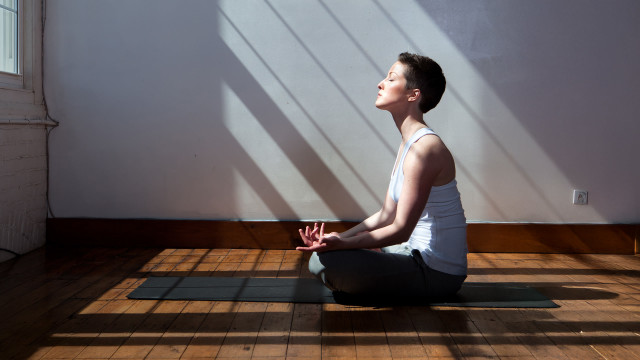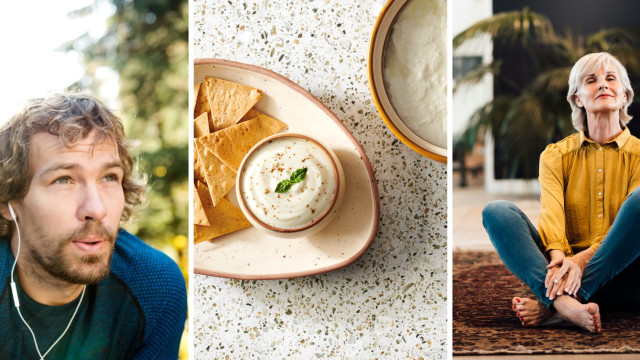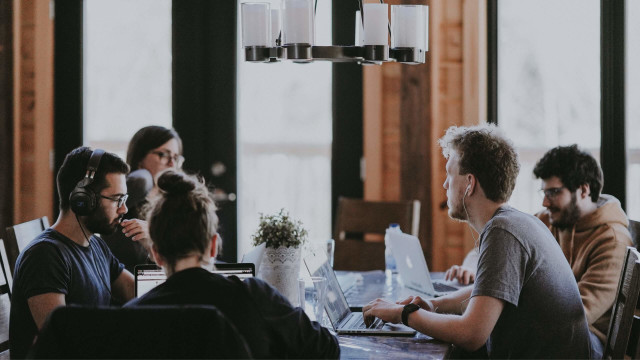How to Make Meditation a Habit

Many people come to meditation as a solution. Whether they’re affected by stress, grief, or some other life upset, it’s common to see practitioners come to the mat with purpose. And even though many have a general understanding that meditation can help, this can feel speculative, ultimately making the habit of meditation (and any practice, really) a challenge.
Contrary to popular belief, meditating isn’t siloed to sitting cross-legged in a quiet room with a blank mind. Any activity in which you experience a sense of the present moment counts as meditating. Sitting up, laying down, walking quietly — these are all ways to simply meditate. But even meditation basics can feel arduous at the start.
Learning any new skill and creating a habit has many benefits: a sense of fulfillment and achievement, positive mental or physical outcomes, and in some cases, a sense of community. And thankfully, once habits are developed, we more easily adopt them into routine. Clinical studies show that habits create physical changes across multiple brain regions, ultimately resulting in changes in behavior that last.
Meditation Basics
So, what is meditation, really? Meditation is a practice of focusing attention on a particular object, thought, or activity with the purpose of settling the mind. There are many pathways to meditation, but at its core, it’s the act of taking any measure of time to slow down and reflect on one’s mental habits. Stopping any activity and taking a few, still breaths is a form of meditation. Mindfulness is an important quality that benefits meditation. It has been described as a state of present moment awareness and acceptance of thoughts and feelings without judgment or trying to change them in any way. Bringing the quality of mindfulness into any activity is a good way to start your meditation practice and turn it into a healthy habit.
Pro tip: This 30-second meditation will help you start meditating today.
“Simple mindfulness techniques ultimately support a better quality of life, and expand our perspective, leading to a richer living experience,” meditation teacher and energy practitioner Almeiri Santos says in her course, Meditation Made Easy. You can introduce meditation into everyday moments, noticing what happens when you center yourself and close your eyes in a moment of stillness, and eventually learn to sit in a state of mindful meditation.
Meditation Myths: Time Commitment
Finding time to meditate is a common barrier to regular practice, but don’t let the illusion of time keep you from making space for quiet moments. “We are only as busy as we want to be,” says Santos. Of course, certain commitments can’t be avoided, but meditation doesn’t have to be a huge time-suck, either.
For instance, you can meditate first thing in the morning while coffee is brewing, while you’re in the shower, or if you’re standing in line at a shop. "To dedicate this short amount of time to yourself is not overwhelming — everybody has 30 seconds to spare," says Santos.
It’s when you find a practice you can stick with — developing a healthy habit — that the benefits of meditation begin to manifest. “Habits decide your future” says motivational speaker and educator Curtis Smith in his course A Modern Guide to Mindfulness. “Simply playing attention to the present moment, understanding what’s happening right here, right now,” is mindfulness he says. Making a healthy meditation habit pays dividends, and the benefits compound over time. “Digging into a healthy habit allows you to better dictate your future,” says Smith.
Try this: Read about Smith's journey with meditation to inspire your own growth with your practice.Why Is Meditating Hard?
Creating any new habit is never easy, but meditating regularly may be a little more challenging than most. Why? Meditation is a solo practice, and you have to hold yourself accountable. Much like physical exercise, this is really all about commitment.
Benefits of the practice may also seem slow to come. While sitting and breathing quietly for a few minutes can leave you feeling refreshed, the sensation may be fleeting. “Society has ingrained in us a value system that prioritizes doing over being,” says Roundglass senior scientist Rebecca Acabchuk. Meditation is all about “being.” This may lead people to devalue or deprioritize meditation time because they feel nothing specific is being accomplished.
A common myth of meditation is that it involves sitting without thought. But for even well-seasoned meditators, thoughts will come and go, leaving many people questioning what they’re doing wrong. Experienced meditators let thoughts pass through awareness as if they are clouds, or maybe even wild children on the run. They don’t get discouraged or critical of themselves when thoughts come and go. "The mind, as we take in a journey through meditation, is a bit like taking a toddler for a walk,” says Vishvapani Blomfield, a Roundglass meditation teacher, in his class Mindful Meditation Basics: Thoughts. As we cultivate the faculty of attention through concentration styles of meditation, Blomfield describes, “You just have to keep on bringing it back every time it wanders off.”
Naturally, it’s not always easy to sit alone with certain thoughts that may arise. “Without the distraction of activity and external stimulation, painful thoughts, feelings, or sensations may rise to the surface,” says Acabchuk. Learning how to sit with all that arises can be healing and even empowering, but it can also be difficult. When you find yourself struggling, imagine the heart is expanding, becoming large enough to hold all that arises. Practice being with what is, and welcome it with open arms.
How to Make Meditation a Habit
Any practice that makes you feel present, calm, centered, and in flow, is worth the barrier to begin it. “Mindfulness meditation alters our way of thinking to help us see the world differently by expanding our perspective,” says Acabchuk. Qualities that are cultivated with mindfulness practices, like acceptance, nonjudgment, and self-compassion can be applied to other areas of our life such as in relationships or with challenges, helping us to manage pain and difficult emotions.
Sustaining feelings of nonjudgmental, present-moment, breath-centered awareness, while doing whatever creative, physical, or practical activity that makes you feel in flow can help to cultivate a dedicated sitting practice.
Like other habits, it helps to set up a routine that is realistic for you. Start small. Try to practice regularly, at a specific time each day. Track and monitor your progress. Expect and allow for setbacks without beating yourself up, and strive to be responsible. Stay committed to getting back on track when you miss planned meditations, and create a social network that is supportive and holds you accountable.
Here are some ways to weave meditation into your daily routine.
- During your commute — whether on bus, train, or carpool, commuting time is ideal for meditation. It’s common practice to read a book, so why not sit with your eyes closed and focus on your breath?
- Walking meditation — If you're one of those people who gets fidgety, bored, or impatient whenever you try to sit down and meditate, or if you simply want to try a new and invigorating meditation practice, a walking meditation may be exactly what you need. Walk with intention, feeling your foot fall and noticing any sensations. As you walk, become more aware of your surroundings and body, helping to build your mindfulness practice.
- Mantra meditation — When you’re feeling challenged to sit still and meditate, try using your voice instead. The repetition of a phrase or affirmation can help stabilize attention and set positive intentions and outcomes for your meditation practice. Try to focus on the sensation and feelings of vibration resulting from your voice while practicing a mantra meditation.
Meditation is a life-long practice, so don’t be afraid to approach it like an experiment to find what works for you. Notice how each experience affects your body and mind, and build a flexible routine based on that.
Remind yourself of the value of the practice. Knowing benefits will manifest can help to prioritize your meditation practice, and carve out time for creating this healthy habit.
Many people give up on meditation because they don’t know if they are doing it right, they get bored, they think they don’t have time, or they feel like it’s a waste of time. It helps to have an experienced teacher to guide you, especially one who resonates with you. Same goes for practices. Find one that works for you. The more you enjoy it, the more likely you are to stick with it.
Try this course, Meditation Made Easy by Roundglass meditation teacher Almeiri Santos to explore how to make meditation a habit in your wellbeing journey.
We have a library of practices to help strengthen your meditation practice. Download the Roundglass app to find what's right for you.
Key Takeaways:
- Meditation can be a short practice done on-the-go and in any setting.
- Mindfulness is a state of paying attention in the present moment without judgment.
- A feel-good state can help to cultivate a dedicated sitting practice.
- Meditation is different for everyone. Experiment with different types of practice to discover which one is best for you.









